
Pope Francis' Final Wishes Revealed Following His Death at 88 – Details
Pope Francis' spiritual testament and funeral arrangements have been revealed, offering a final glimpse into his humble wishes and the historic events unfolding in Vatican City today.
Pope Francis passed away at 88. He outlined his burial preferences and other final instructions in a spiritual testament he wrote on June 29, 2022. He asked for a simple grave in the Papal Basilica of Saint Mary Major. This was where he held close throughout his ministry.
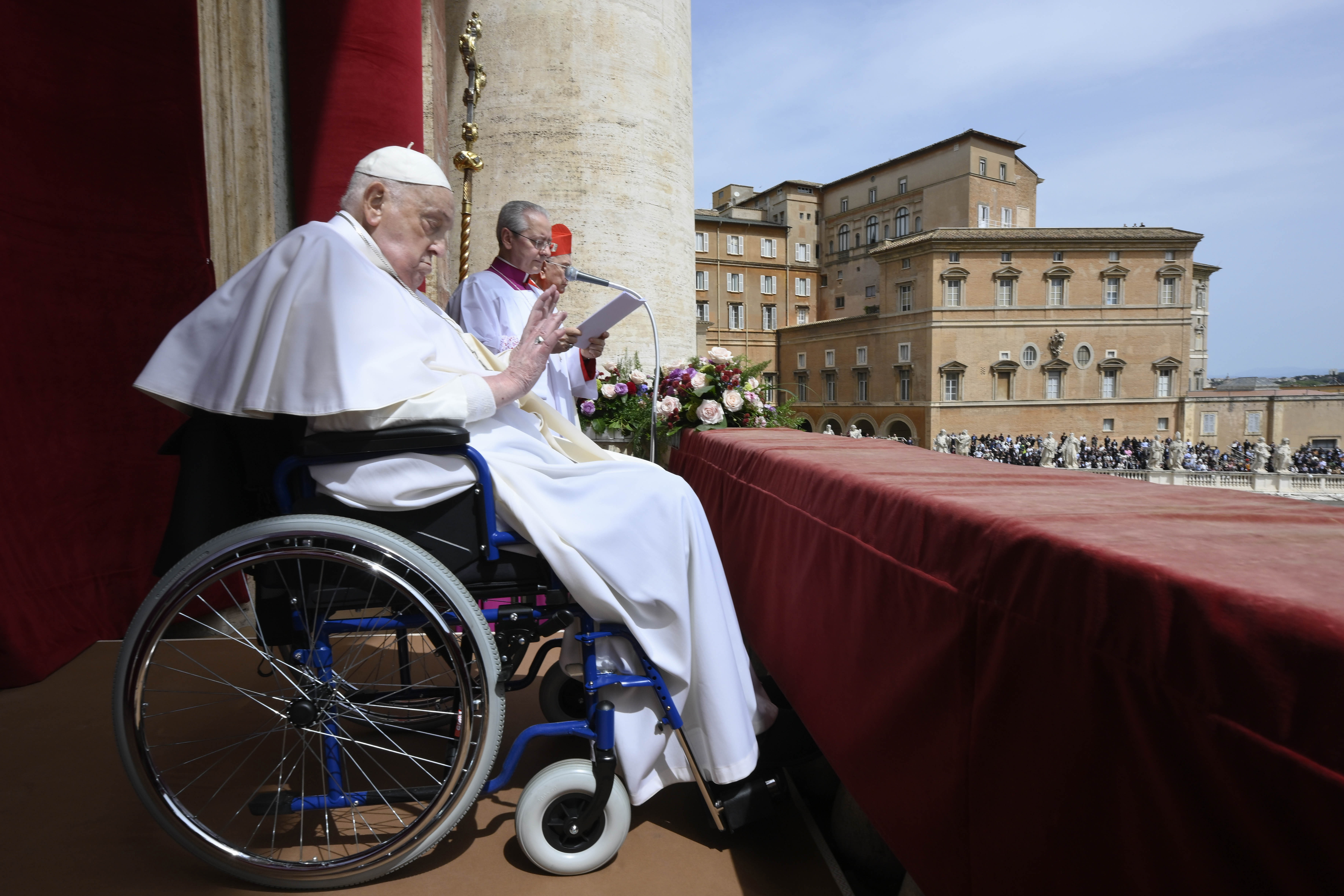
Pope Francis delivers his Urbi Et Orbi Blessing blessing from the balcony overlooking St. Peter's Square on April 20, 2025 | Source: Getty Images
He requested that his tomb be placed in the ground without ornamentation and carry only the inscription: Franciscus. Regarding the arrangements, he confirmed, "I have given the necessary instructions regarding this to Cardinal Rolandas Makrickas, Extraordinary Commissioner of the Liberian Basilica."
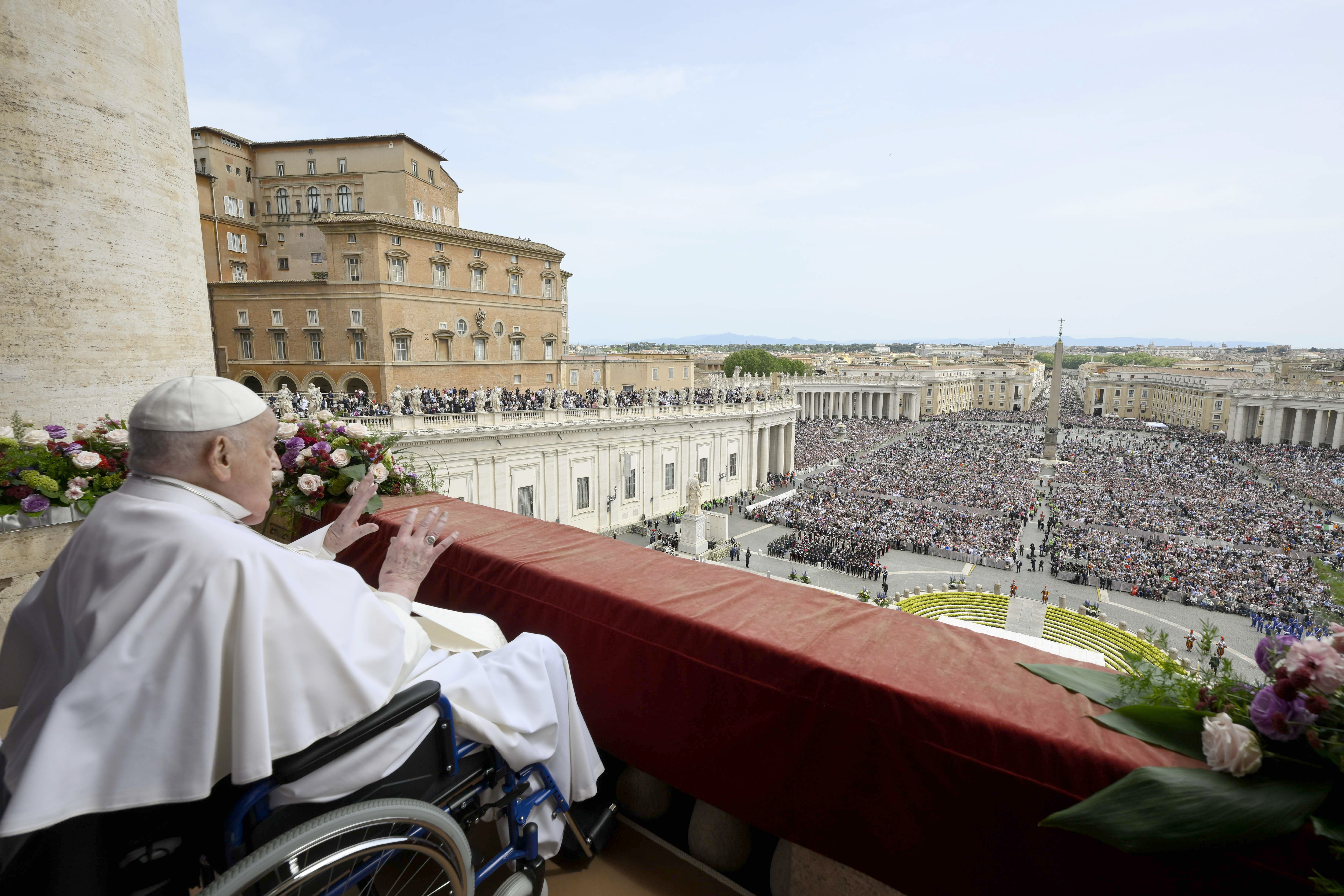
Pope Francis delivers his Urbi Et Orbi Blessing blessing from the balcony overlooking St. Peter's Square on April 20, 2025 | Source: Getty Images
Today, Saturday, April 26, 2025, Pope Francis' funeral is being held in St. Peter's Square. The Mass, which began at 10:00 a.m., is led by Cardinal Giovanni Battista Re, the Dean of the College of Cardinals. After the ceremony, the coffin will be transferred to the Basilica of Saint Mary Major for burial, per the Pope's wishes.
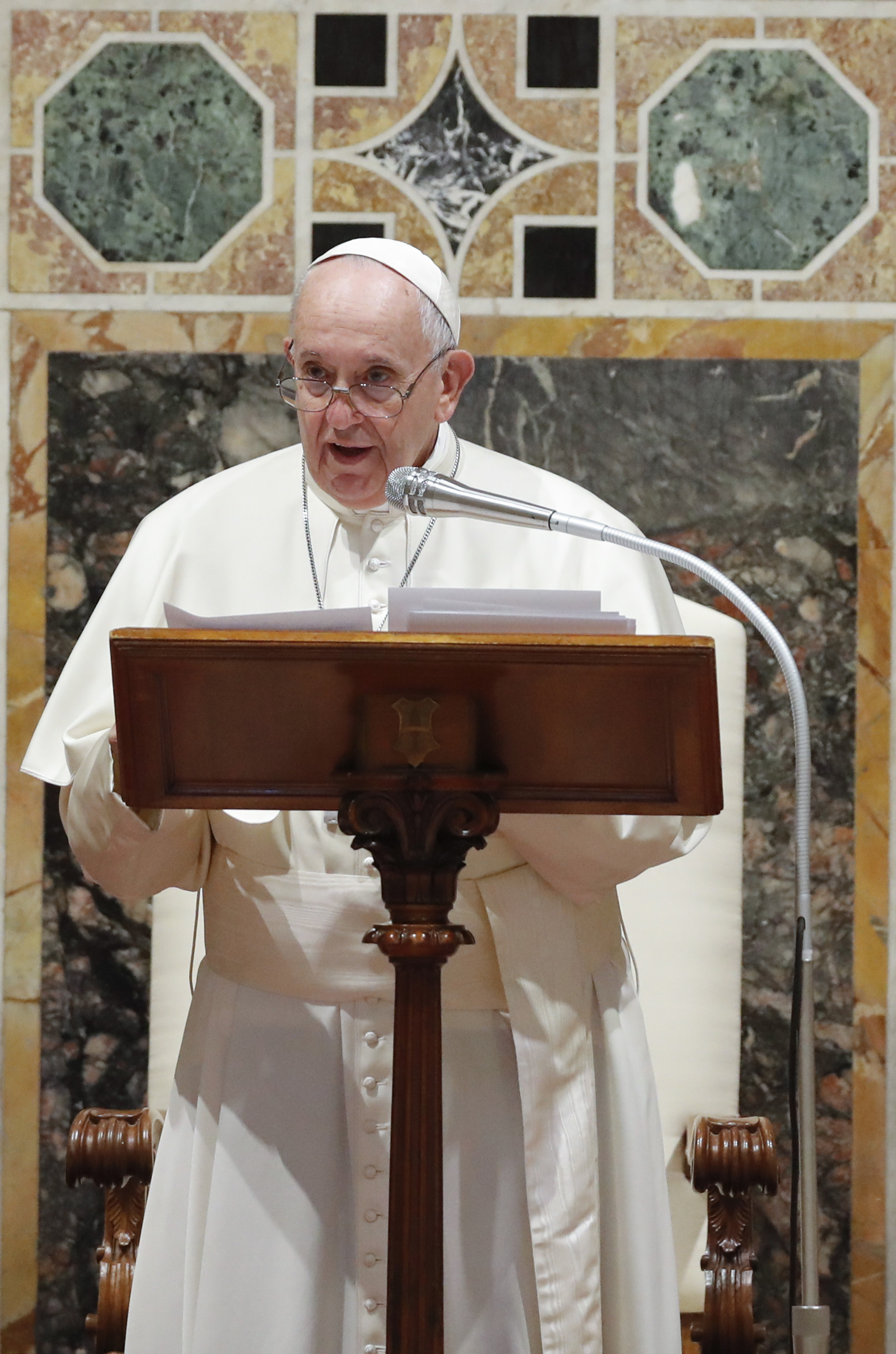
Pope Francis in the Sala Regia hall at the Vatican on January 9, 2020 | Source: Getty Images
In the opening of his testament, the late pontiff wrote, "In the name of the Most Holy Trinity. Amen." He acknowledged "the approaching twilight of [his] earthly life" and expressed confidence in eternal life. Reflecting on his devotion to the Blessed Virgin Mary, he shared that he had entrusted himself to her throughout his ministry.
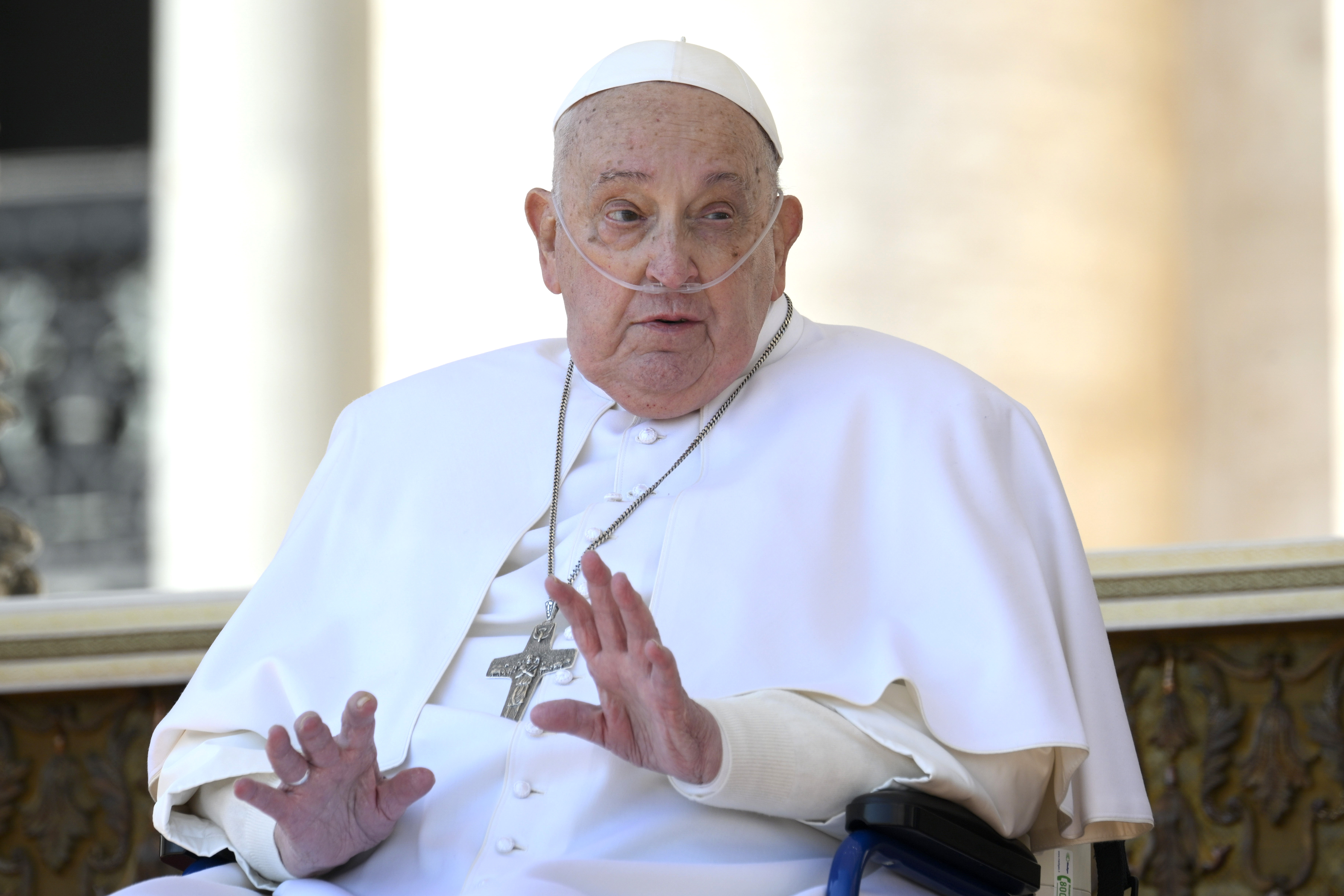
Pope Francis greets pilgrims during the "Jubilee Of The Sick And Health Care Workers" at St. Peter's Square on April 6, 2025 in Vatican City | Source: Getty Images
He noted that Saint Mary Major had been a constant place of prayer during his life, where he sought the Blessed Mother's intercession before and after each journey. He also provided specific burial instructions, asking for a grave located between the Pauline Chapel and the Sforza Chapel.

Pope Francis waves at the audience during his weekly private audience with the dioceses of Spoleto and Alessandria in the Paul VI Hall at the Vatican on September 17, 2022 | Source: Getty Images
The burial preparations were financed by a benefactor whose donation the Pope arranged by himself. In keeping with his humble approach, Pope Francis asked for a "simple" funeral "without particular ornamentation." Yet security preparations surrounding the event have been extensive.

A view during the funeral of Pope Francis in St. Peter's Square on April 26, 2025 | Source: Getty Images
Dai Davies, a former head of Royal Protection for Britain's royal family, described the funeral as a "Grade A" event, explaining, "The queen's funeral, the king's coronation, the Olympics, President Donald Trump's inauguration − the pope's funeral is at that level."

Finland President Alexander Stubb, US President Donald Trump, and US First Lady Melania Trump attend the funeral of Pope Francis on April 26, 2025 | Source: Getty Images
An estimated crowd of several hundred thousand people was expected to gather in Vatican City to pay their respects. The participants include about 250 cardinals and a multitude of bishops, priests, and members of religious orders.
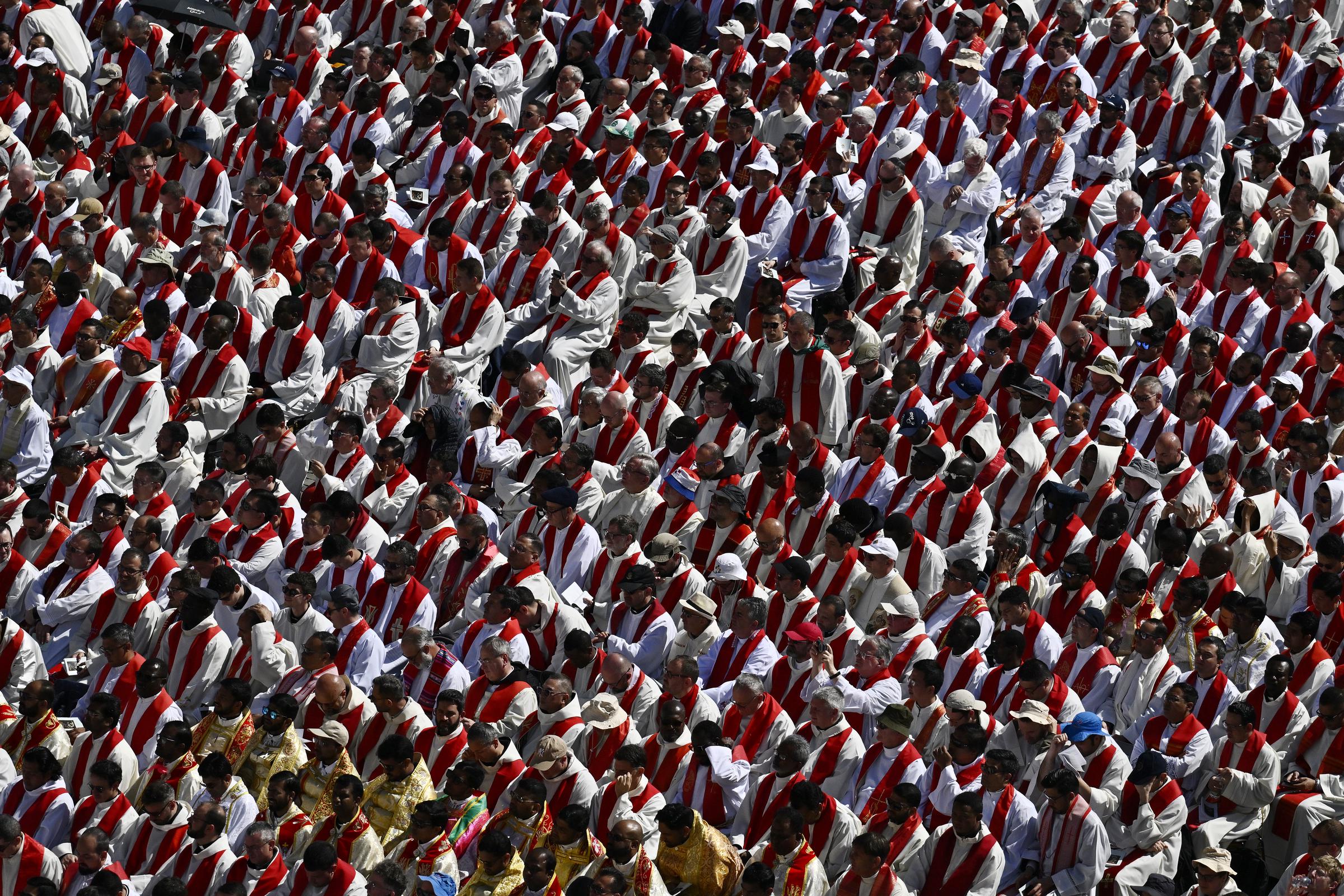
Members of the clergy attend the funeral of Pope Francis in St. Peter's Square on April 26, 2025 | Source: Getty Images
The Pope's wooden and zinc coffin, sealed on Friday, was to be placed before the altar in St. Peter's Square, facing the vast assembly. The Mass includes readings from the Acts of the Apostles, the Letter of Saint Paul to the Philippians, and the Gospel of John. Music is provided by the Sistine Chapel Choir, offering one last tribute to the Holy Father.
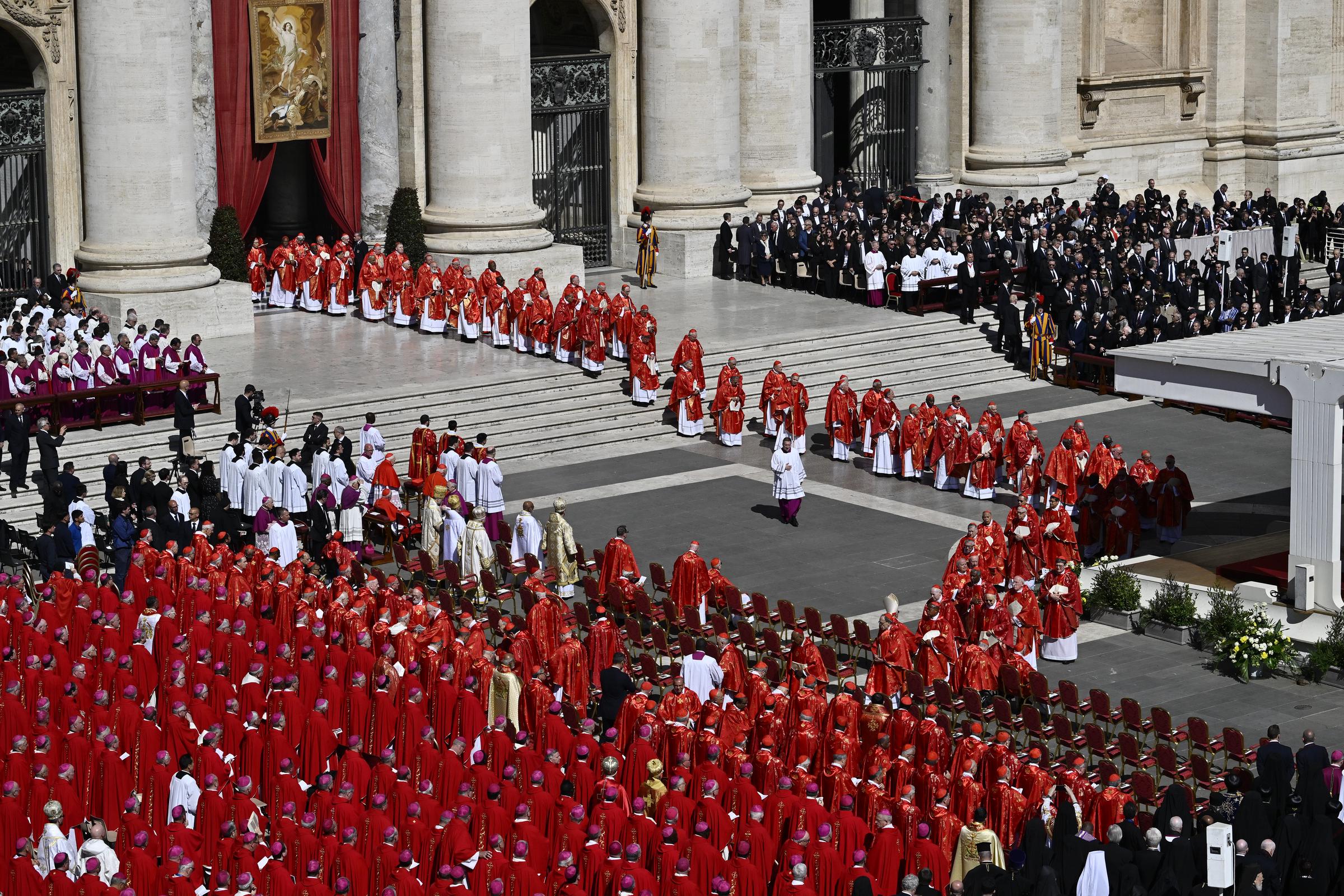
A general view during the funeral of Pope Francis in St. Peter’s Square on April 26, 2025 | Source: Getty Images
Prayers of the faithful are being recited in several languages, including French, Arabic, Portuguese, Polish, German, and Chinese. After the Mass, the funeral procession will move slowly through Rome, covering about four kilometers to reach Saint Mary Major.
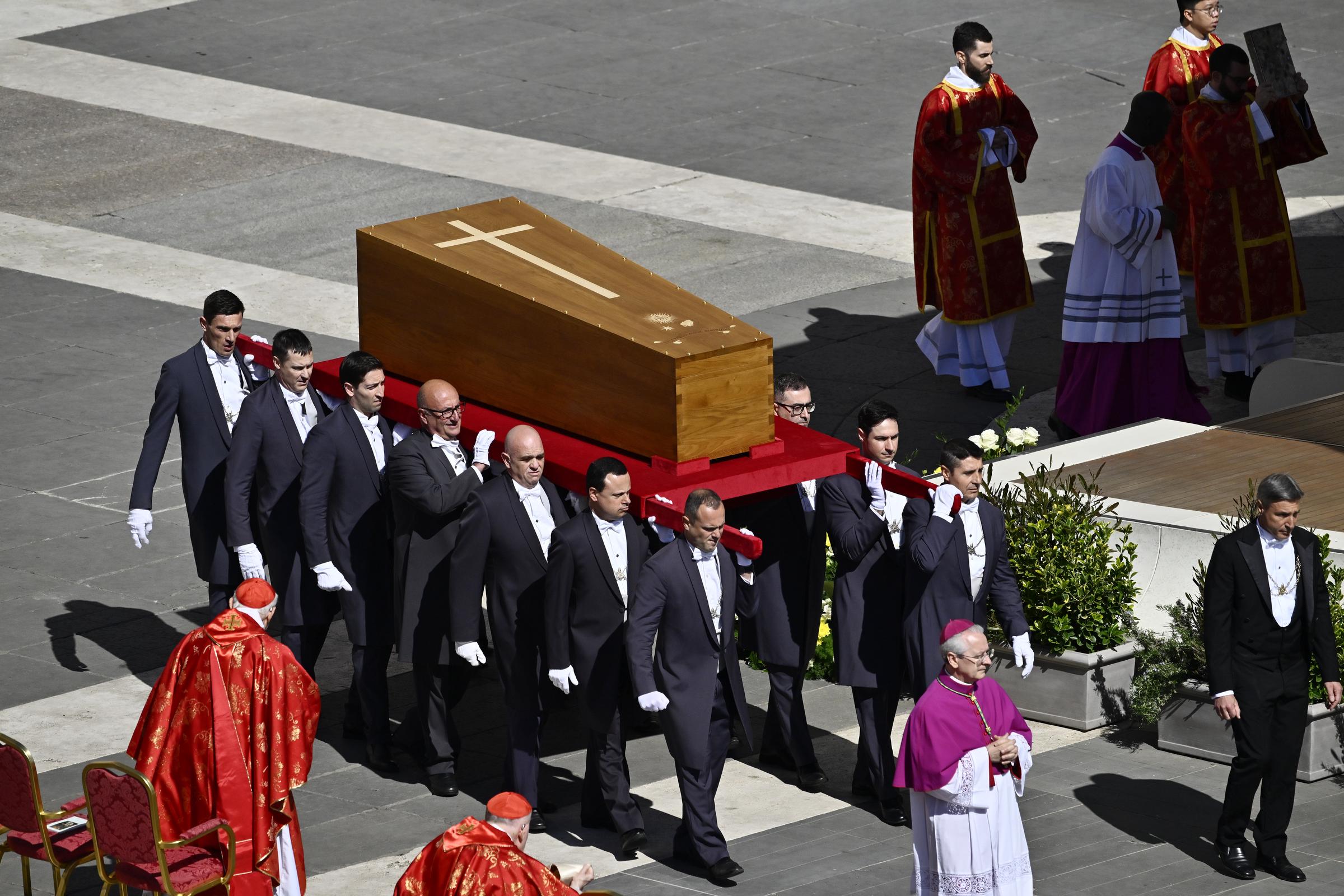
Pallbearers carry the coffin during the funeral of Pope Francis in St. Peter’s Square on April 26, 2025 | Source: Getty Images
Along the way, Romans will have the chance to bid farewell to the Bishop of Rome, retracing a path he often traveled after apostolic trips and hospital stays. Upon arrival at the Basilica, the Pope's coffin will be greeted by "the last ones," a group of poor and marginalized individuals who held a special place in his heart.
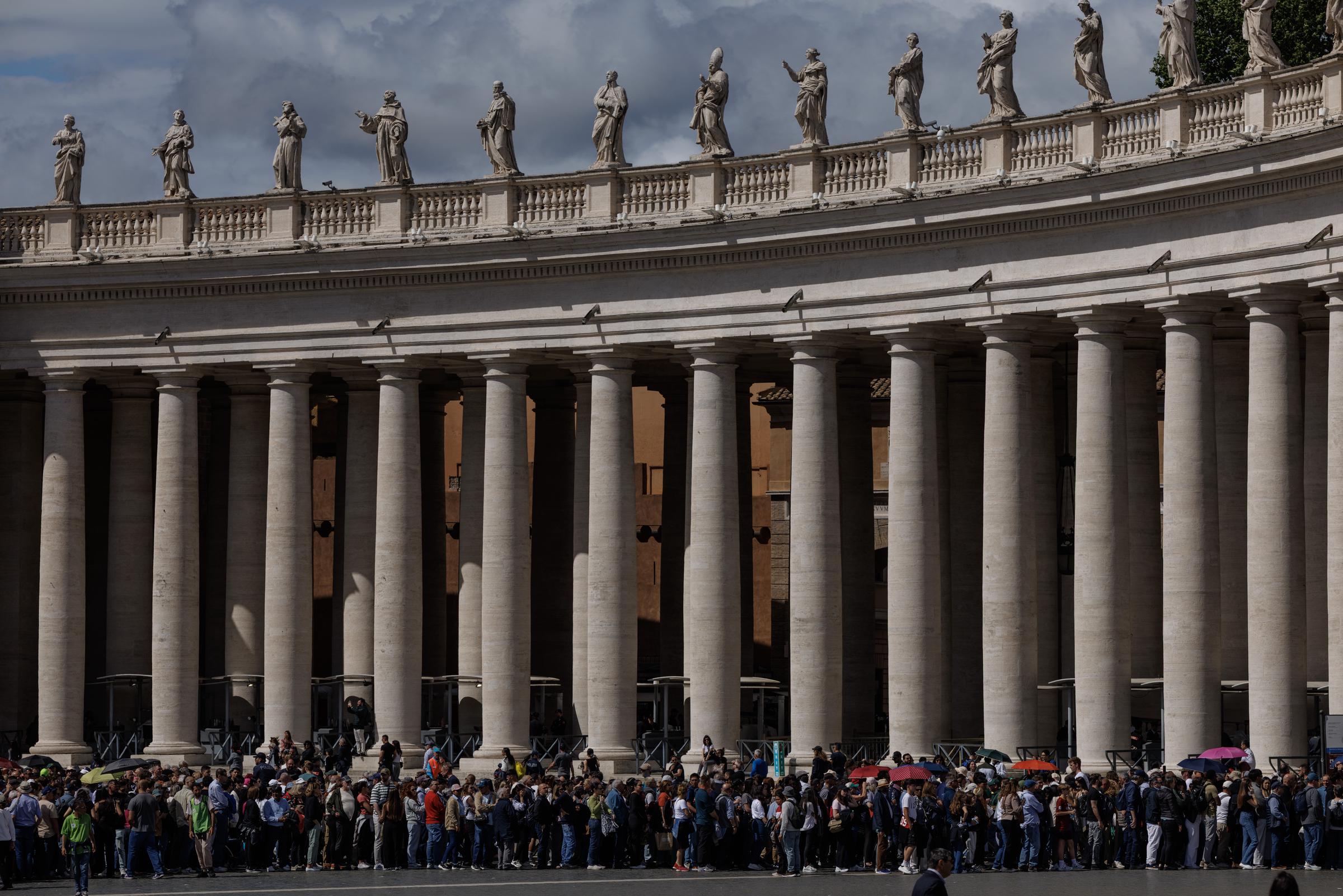
The queue files past the late Pope Francis on April 25, 2025 in Vatican City | Source: Getty Images
The final moments of farewell will be private. Cardinal Camerlengo Kevin Farrell will seal the coffin, together with officials from the Prefecture of the Papal Household, the Office of Liturgical Celebrations, and the Liberian Chapter.
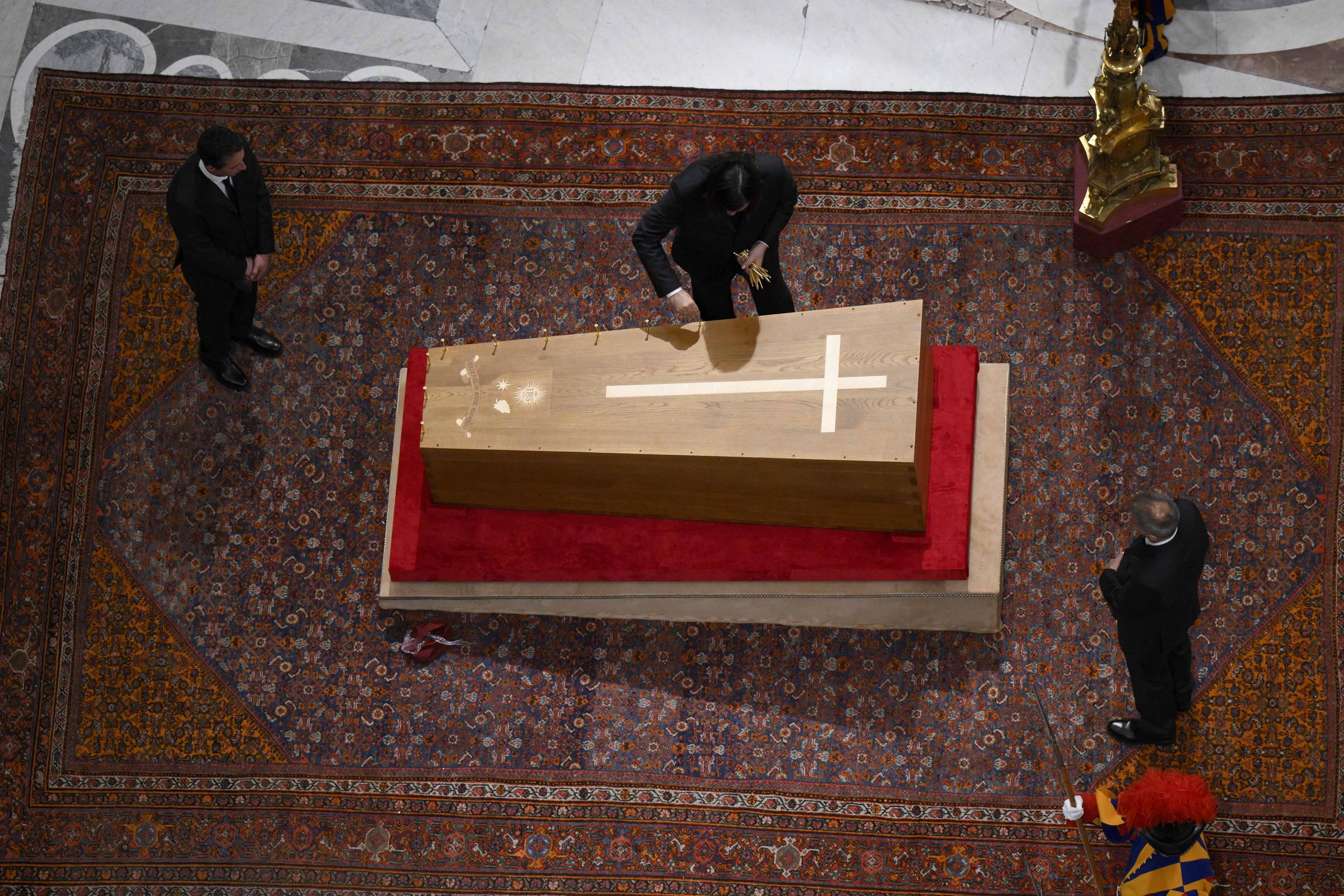
A view of the Pope Francis coffin as Cardinal Kevin Farrell presides in St. Peter's Basilica at the Rite of Sealing of the Coffin, ahead of the papal funeral on Saturday morning, on April 25, 2025 | Source: Getty Images
Following the Rite of Final Commendation, the Pope's remains will be laid to rest and sprinkled with holy water. The burial will be officially documented by the notary of the Liberian Chapter and signed by those present, including the Camerlengo Cardinal and the Master of Papal Liturgical Celebrations.
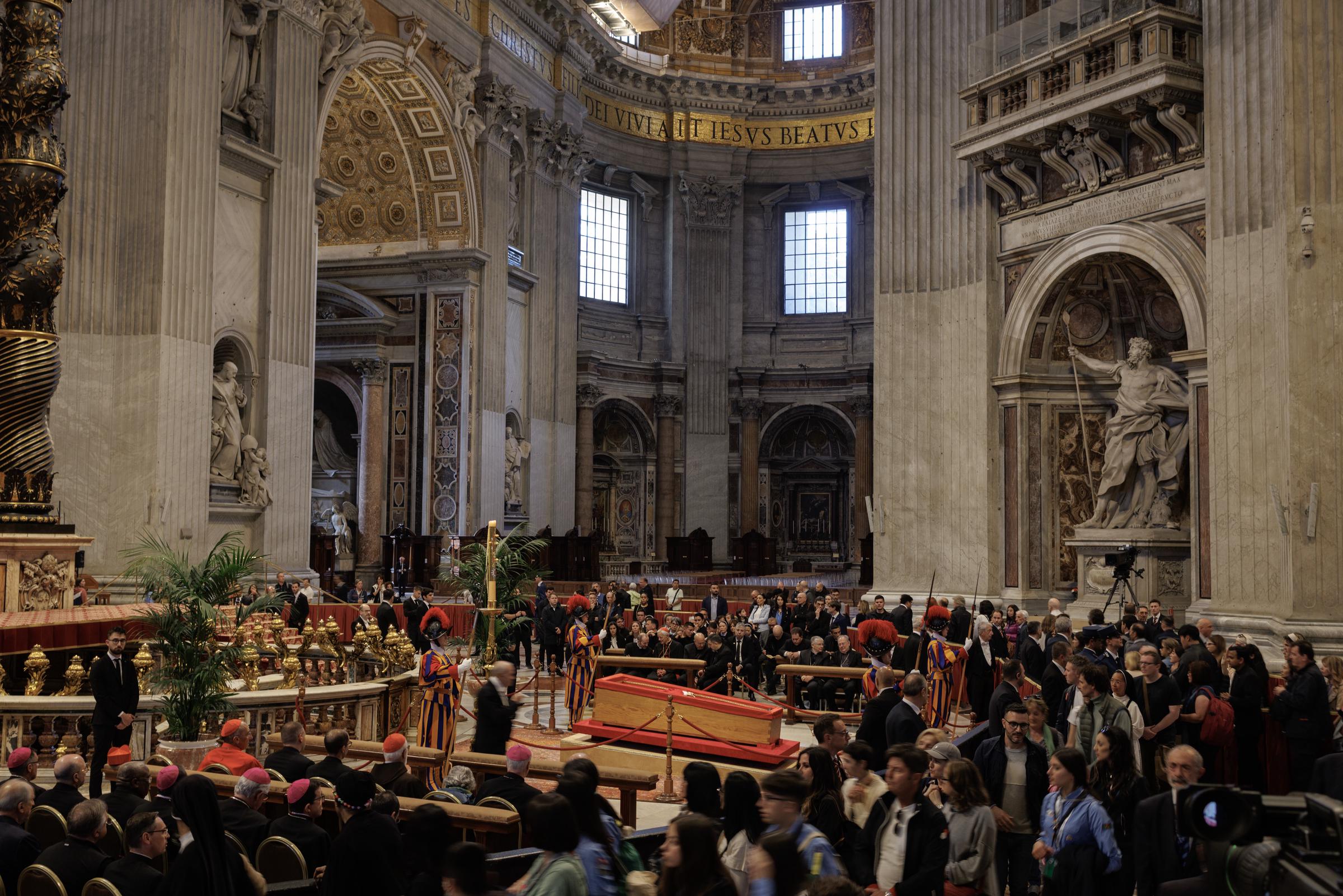
The queue files past the late Pope Francis on April 25, 2025 in Vatican City | Source: Getty Images
The ceremony is expected to conclude around 2:00 p.m. Coverage of the funeral is being broadcast globally, with English commentary available online through Vatican Media channels. More than 130 countries and organizations have sent delegations, including 12 reigning monarchs, 55 heads of State, and 14 heads of Government.

A view of St. Peter's Square as Vatican prepares for Pope Francis funeral on April 25, 2025 in Vatican City | Source: Getty Images
More than 4,000 journalists have registered to cover the funeral. Pope Francis closed his testament with a prayer for those who loved him and continued to pray for him. He offered his final sufferings "for peace in the world and for fraternity among peoples." The document was signed simply, "FRANCIS," and dated Santa Marta, June 29, 2022.
Before his death, Pope Francis had already taken steps to prepare for the uncertainties surrounding his health. Among the measures he quietly put in place was a resignation letter, signed years earlier, to be enacted if he ever became incapacitated.
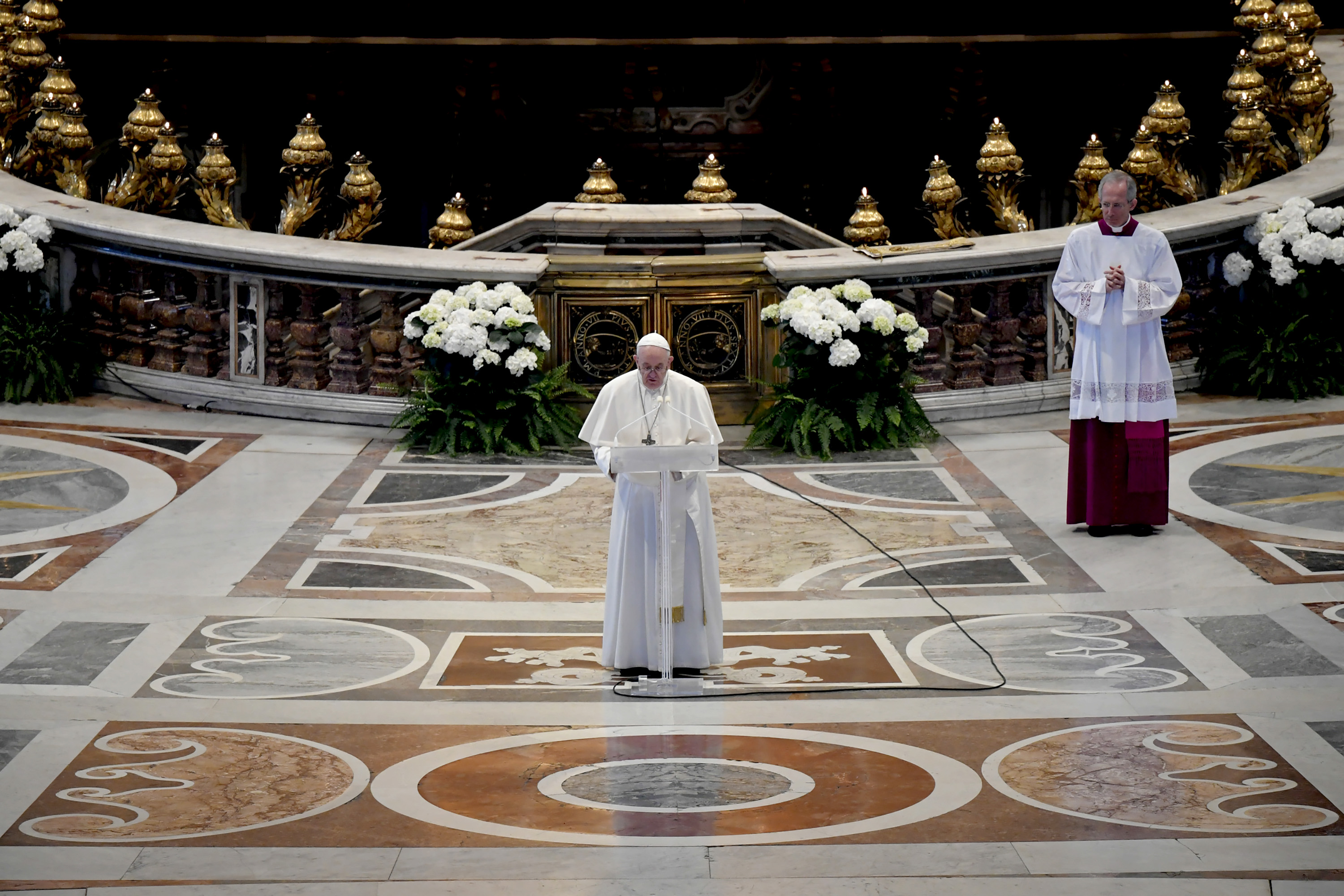
Pope Francis during the Easter Mass at the St. Peter's Basilica on April 12, 2020, in Vatican City. | Source: Getty Images
In the final weeks of his life, Pope Francis remained in critical but stable condition following hospitalization. During this time, renewed attention fell on a document he had signed in 2013 — a resignation letter meant to take effect when he could no longer fulfill his duties.
The existence of this letter raised several questions: What did it mean for the Church? How severe was the Pope's condition? And how was the Vatican preparing for the inevitable transition?
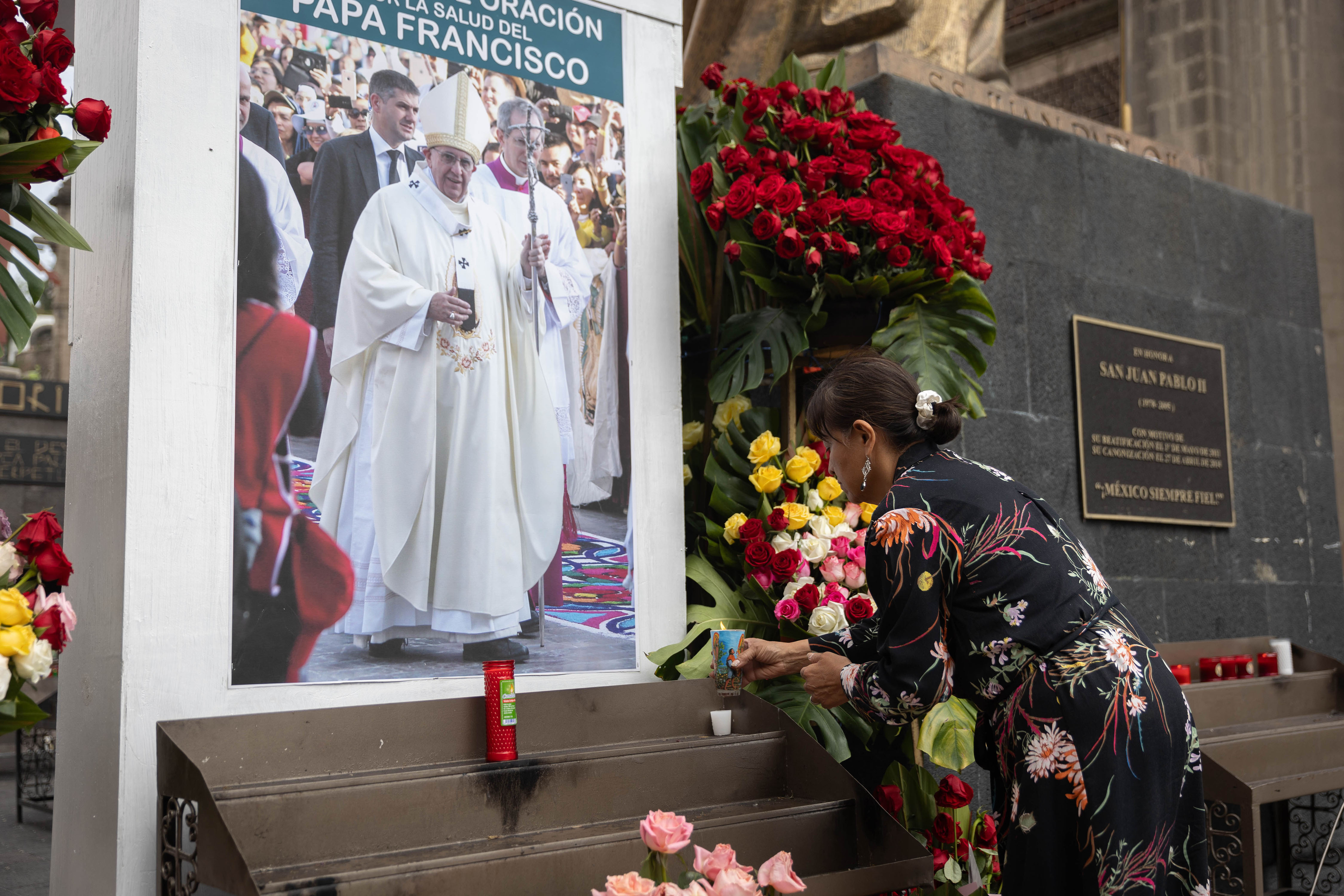
A woman placing a candle in front of an image of Pope Francis outside the Basilica de Guadalupe, in Mexico City, Mexico, on February 23, 2025. | Source: Getty Images
As the Pope's health deteriorated, attention turned to the resignation letter he had quietly prepared over a decade earlier. Intended to safeguard the Church during a potential crisis, the letter represented a rare but prudent step in modern papal history.
While his final hospitalization and frail condition raised speculation about whether this letter might soon take effect, reports indicated that the Pope had accepted that "the end of his earthly life is very close," making a formal resignation seem unnecessary.
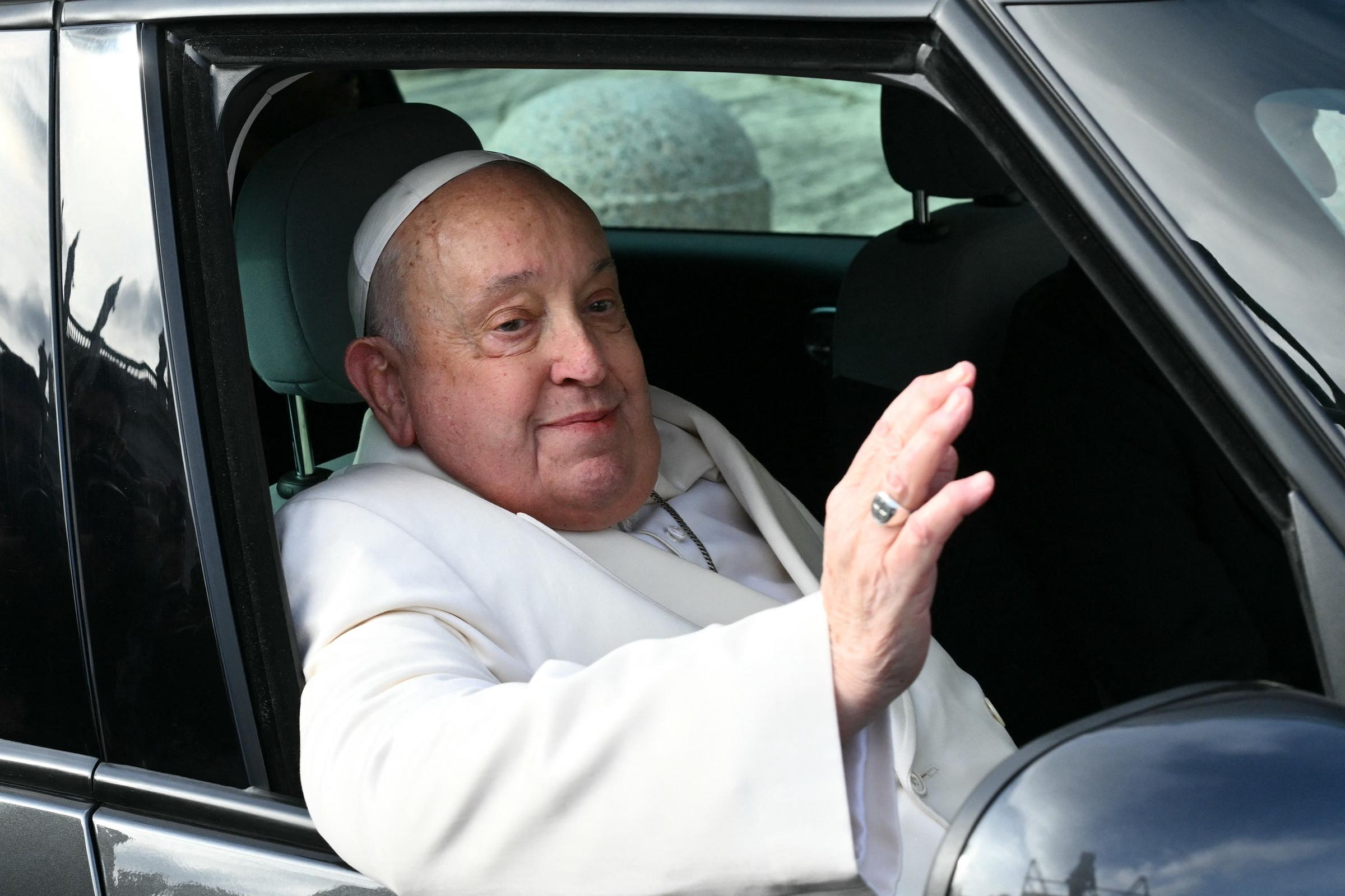
Pope Francis arriving to celebrate the mass for the Jubilee of the Armed Forces at St. Peter's square in Vatican City on February 9, 2025. | Source: Getty Images
Although the Vatican never confirmed plans to enact the resignation letter, procedures were in place had it been needed. According to The Australian's chief leader writer, Tess Livingstone, the first steps following a papal resignation or death would include the destruction of the Pope's ring and seal of office to prevent misuse.
Nine days of mourning, known as novendiales, would follow, accompanied by masses for the repose of his soul. Pope Francis, however, opted to be buried not in the Vatican but in the Basilica of St. Mary Major, a historic and revered church dedicated to the Virgin Mary, located just outside the Vatican's walls.
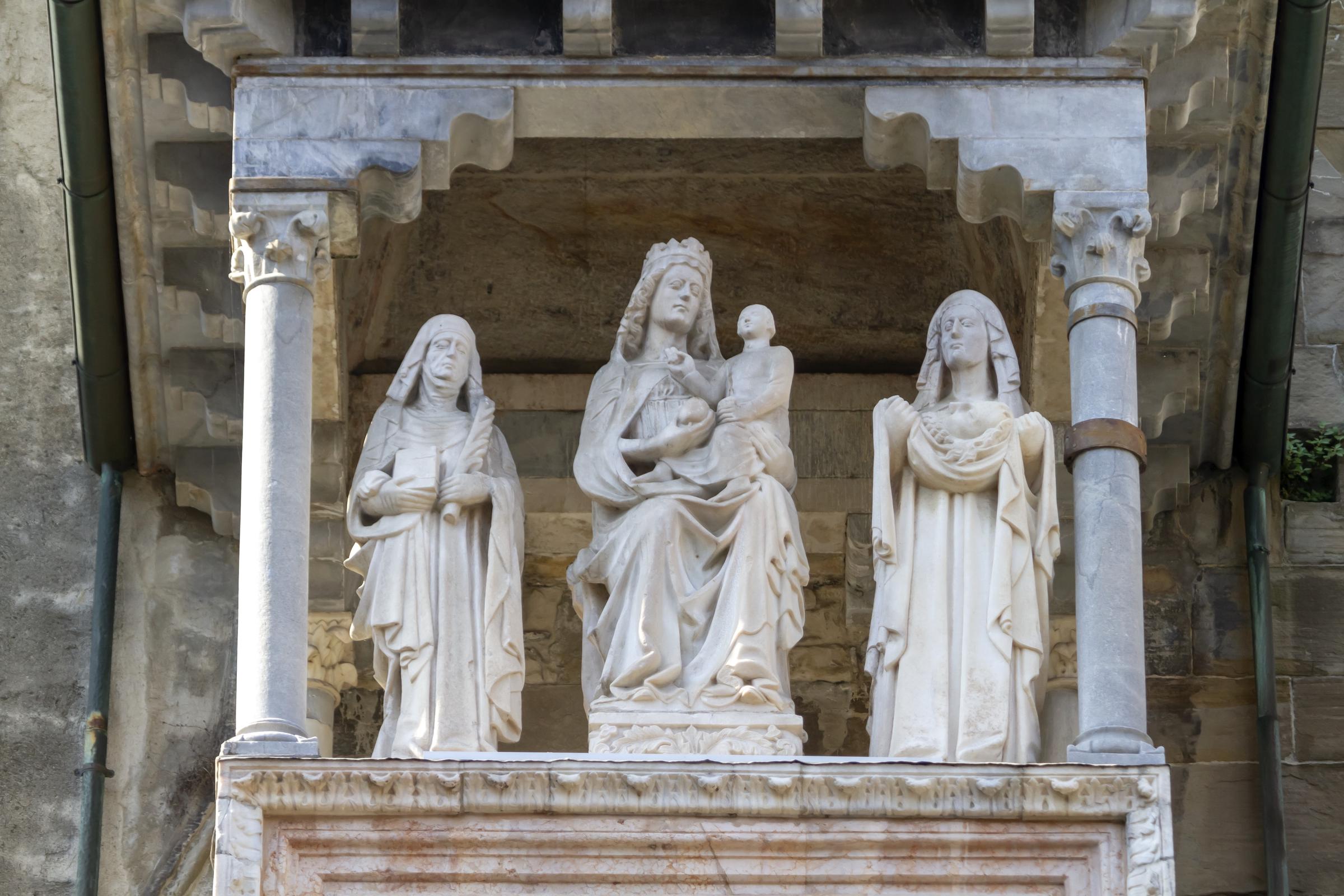
Statues outside The Basilica of St. Mary Major in Rome, Italy. | Source: Getty Images
In a December 12, 2023 interview with Mexican news outlet N+, the Pope, in good spirits, openly discussed his funeral plans. He revealed that he had already spoken with Archbishop Diego Giovanni Ravelli, his master of liturgical ceremonies, about the arrangements.

Pope Francis photographed with King Philippe and Queen Mathilde of Belgium at Laeken Castle on September 27, 2024, in Brussels, Belgium. | Source: Getty Images
"We simplified them quite a bit," he said before jokingly adding, "I will premiere the new ritual." This decision marked a significant departure from tradition.
Historically, popes have been buried in the Vatican Grottoes beneath St. Peter's Basilica. The last pontiff to break this custom was Pope Leo XIII, who died in 1903 and was interred at the Basilica of St. John Lateran.
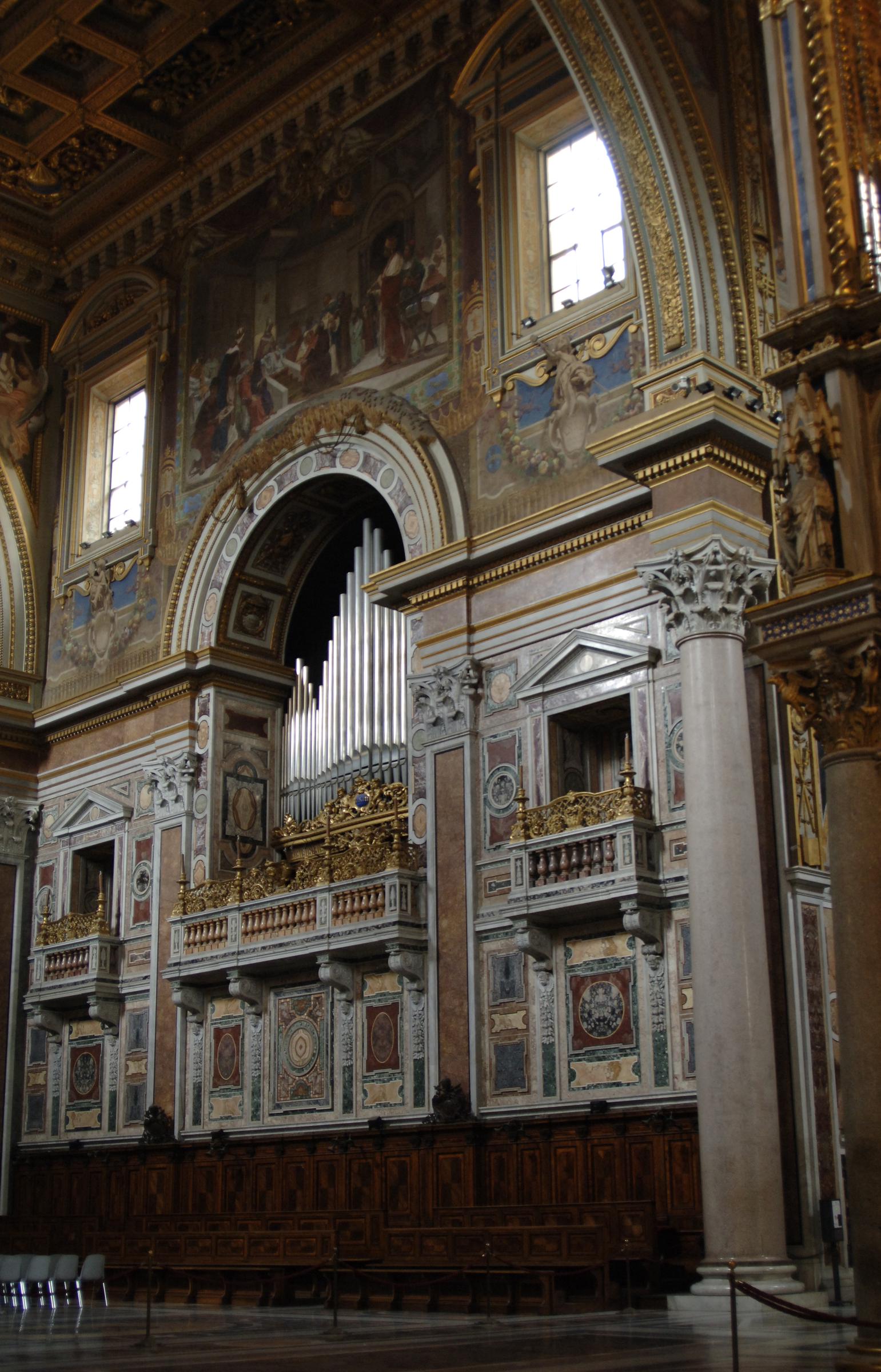
Inside The Basilica of St. John Lateran in Rome, Italy. | Source: Getty Images
As for St. Mary Major, six popes have been buried there, but the most recent was Pope Clement IX in 1669. Pope Francis' reasoning for his choice was deeply personal.
"It's my great devotion," he said, explaining that before becoming pope, he would visit the basilica on Sunday mornings whenever he traveled to Rome.
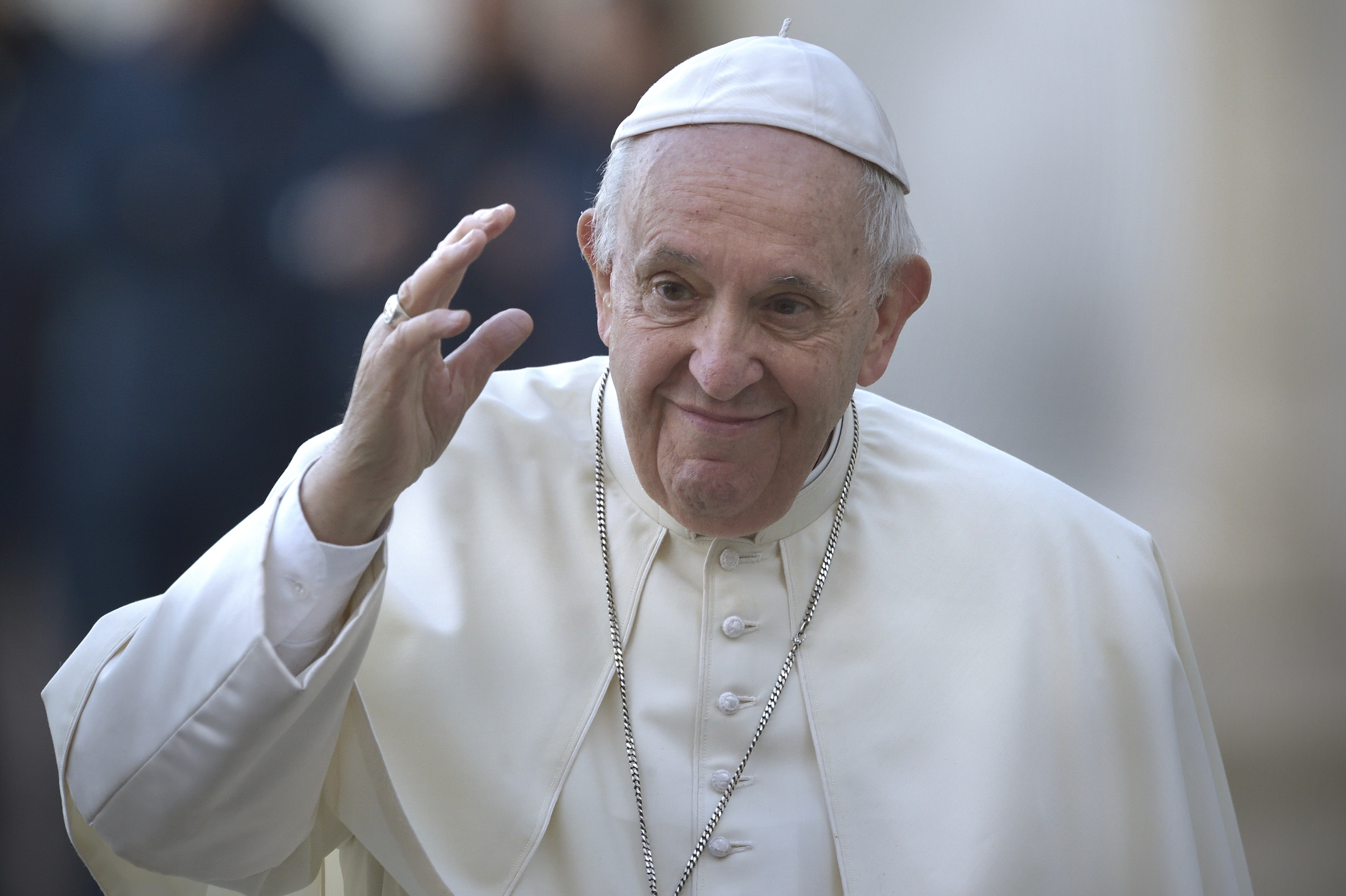
Pope Francis meets in St. Peter's Square, Vatican City, on April 18, 2022. | Source: Getty Images
The site houses the revered Byzantine-style icon known as Salus Populi Romani (Salvation of the People of Rome), which depicts the Virgin Mary holding the infant Jesus.
The Pope has long expressed a special connection to this image, often praying before it after returning from his papal trips. His preference for a final resting place outside the Vatican aligns with his broader emphasis on humility and simplicity.
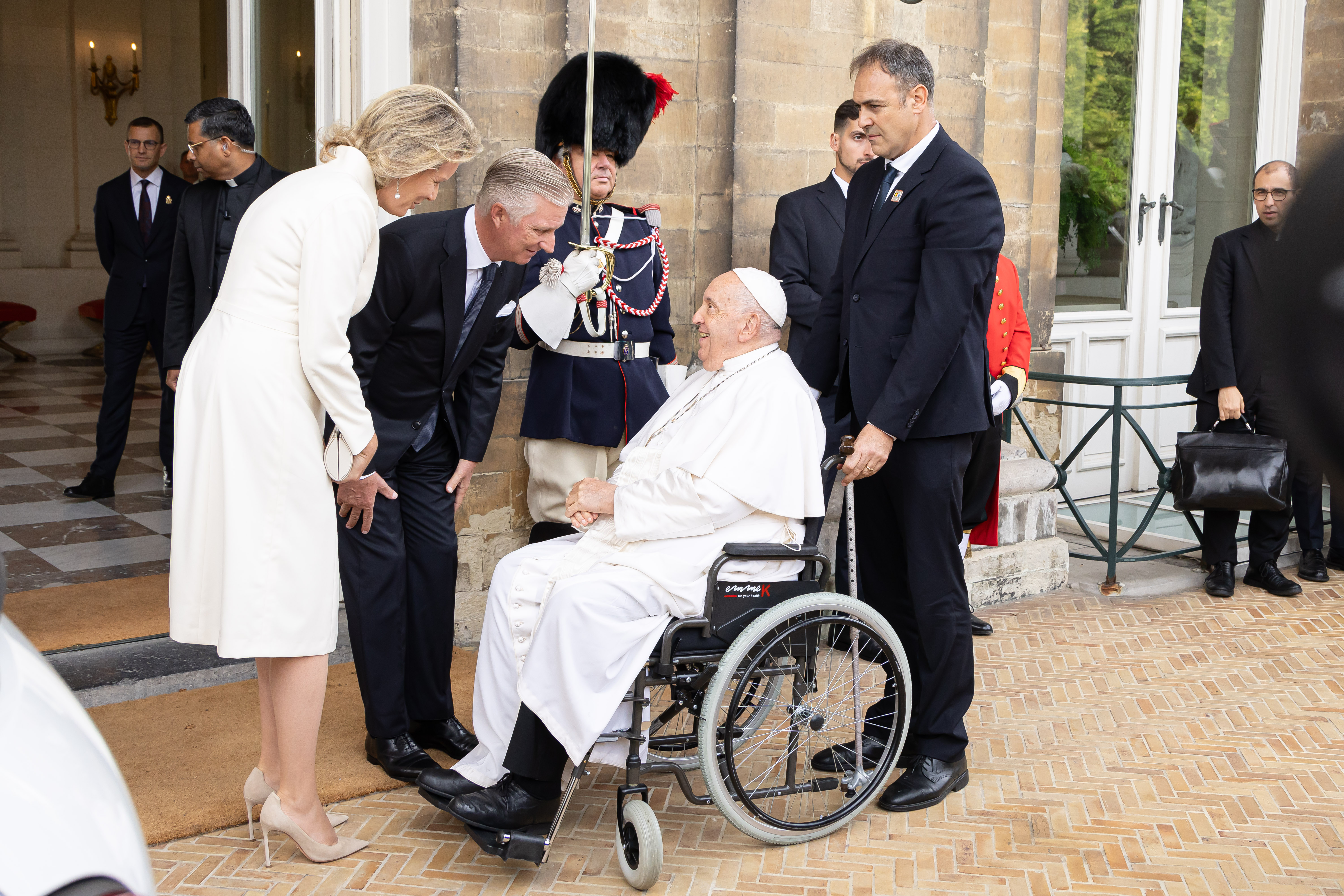
King Philippe and Queen Mathilde of Belgium welcoming Pope Francis at Laeken Castle on September 27, 2024, in Brussels, Belgium. | Source: Getty Images
By November 2024, he had revised the funeral rites that would be used upon his death, streamlining the rituals to highlight his role as a bishop rather than an exalted figure.
The Vatican newspaper L'Osservatore Romano reported that he approved the updated liturgical book on April 29, replacing the previous version last updated in 2000.
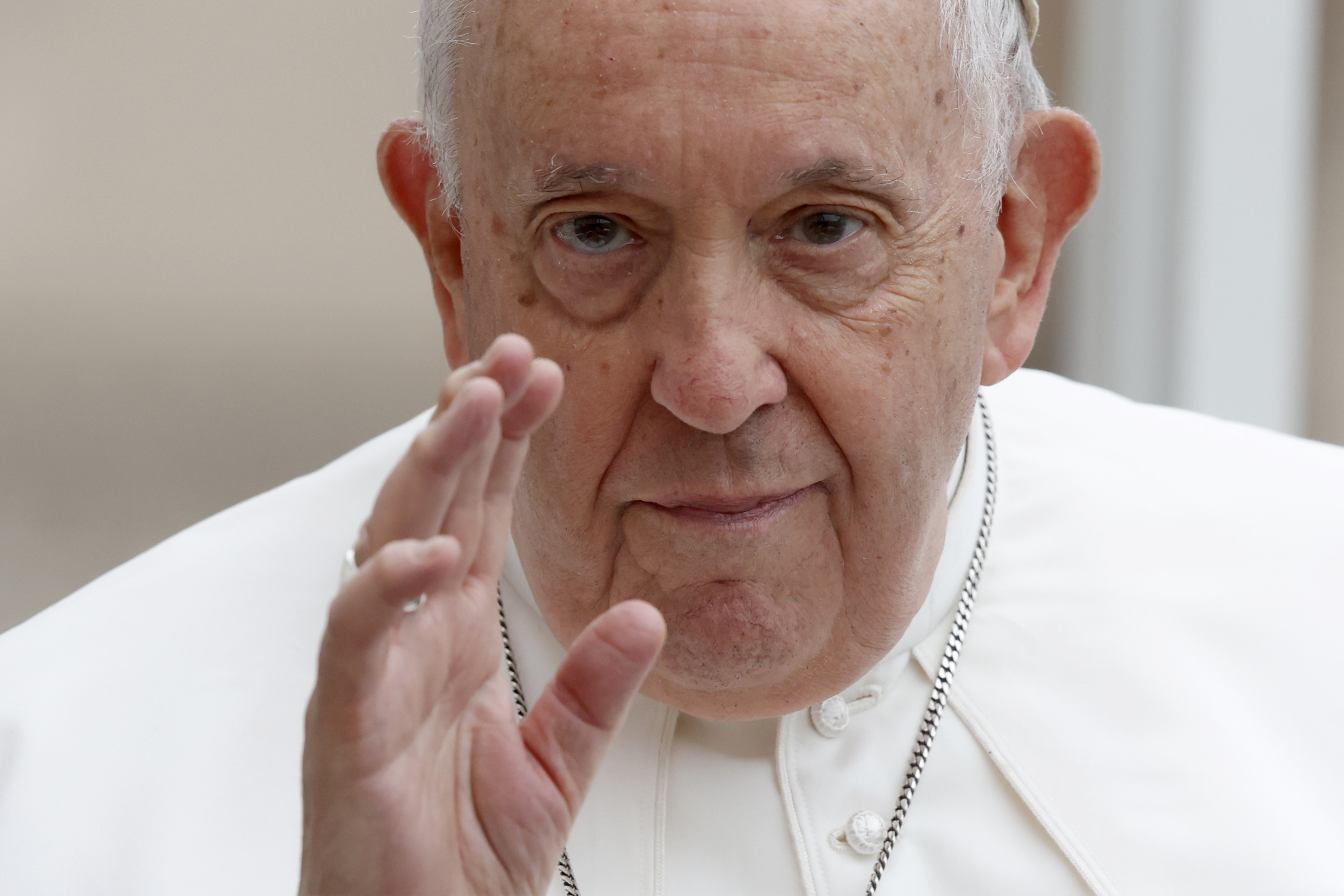
Pope Francis arriving for his weekly general audience in St. Peter's Square, Vatican City, on May 10, 2023. | Source: Getty Images
The decision to revise these rites came in the wake of Pope Benedict XVI's death on December 31, 2022. As the first retired pope in 600 years, Benedict's funeral posed unique challenges for the Vatican, prompting Pope Francis to work with Monsignor Ravelli to simplify the traditional ceremonies.
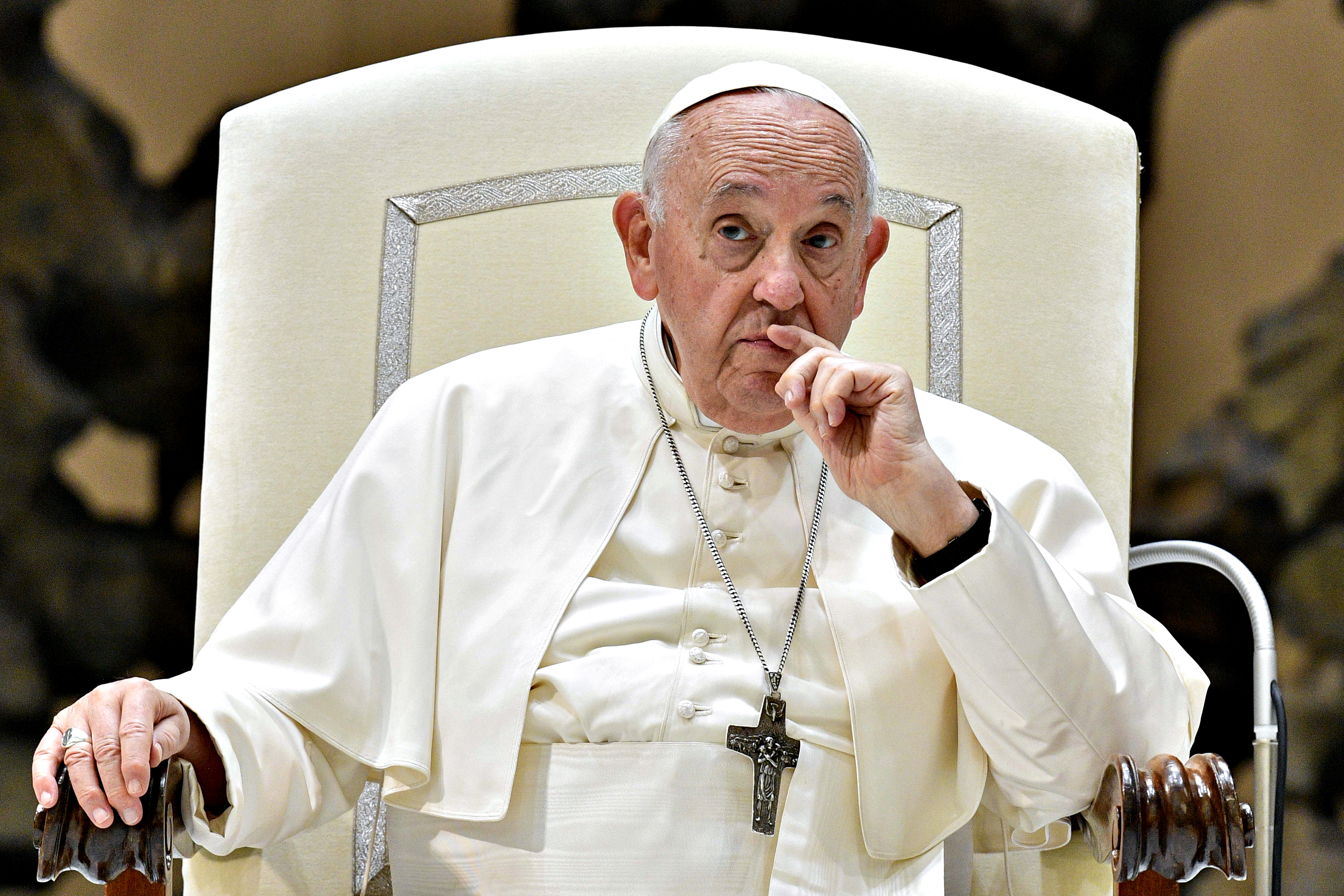
Pope Francis attends his weekly general audience at the Paul VI Hall on August 9, 2023, in Vatican City. | Source: Getty Images
In the event of Pope Francis' passing, behind the scenes, cardinals would prepare for what could be a historic transition. "Around the world, about 200 cardinals would be getting ready to fly to Rome," Livingstone explained.
"I'm quite sure that would be the case. Quite a few — probably about 50— live in Rome as it is," she added. A conclave, the closed-door assembly of cardinals responsible for electing a new pope, would then be convened.

Pope Francis presiding over a mass for the Epiphany in St. Peter's Basilica on January 6, 2025, in Vatican City. | Source: Getty Images
Among them, 138 cardinals under the age of 80 would be eligible to vote, while senior cardinals over 80 would participate in pre-conclave discussions. "That promises to be extremely lively this time around," Livingstone noted.
Given the Pope's history of selecting cardinals from diverse backgrounds who are largely unfamiliar with one another, some speculated that the upcoming conclave may be particularly unpredictable.

Pope Francis delivering his Angelus blessing from the window of his private studio to pilgrims gathered in St. Peter's Square on December 13, 2020, in Vatican City. | Source: Getty Images
When questioned in 2022 about whether his diverse appointments would make the process more challenging, Pope Francis responded, "Of course, from the human point of view. But it is the Holy Spirit who works there."
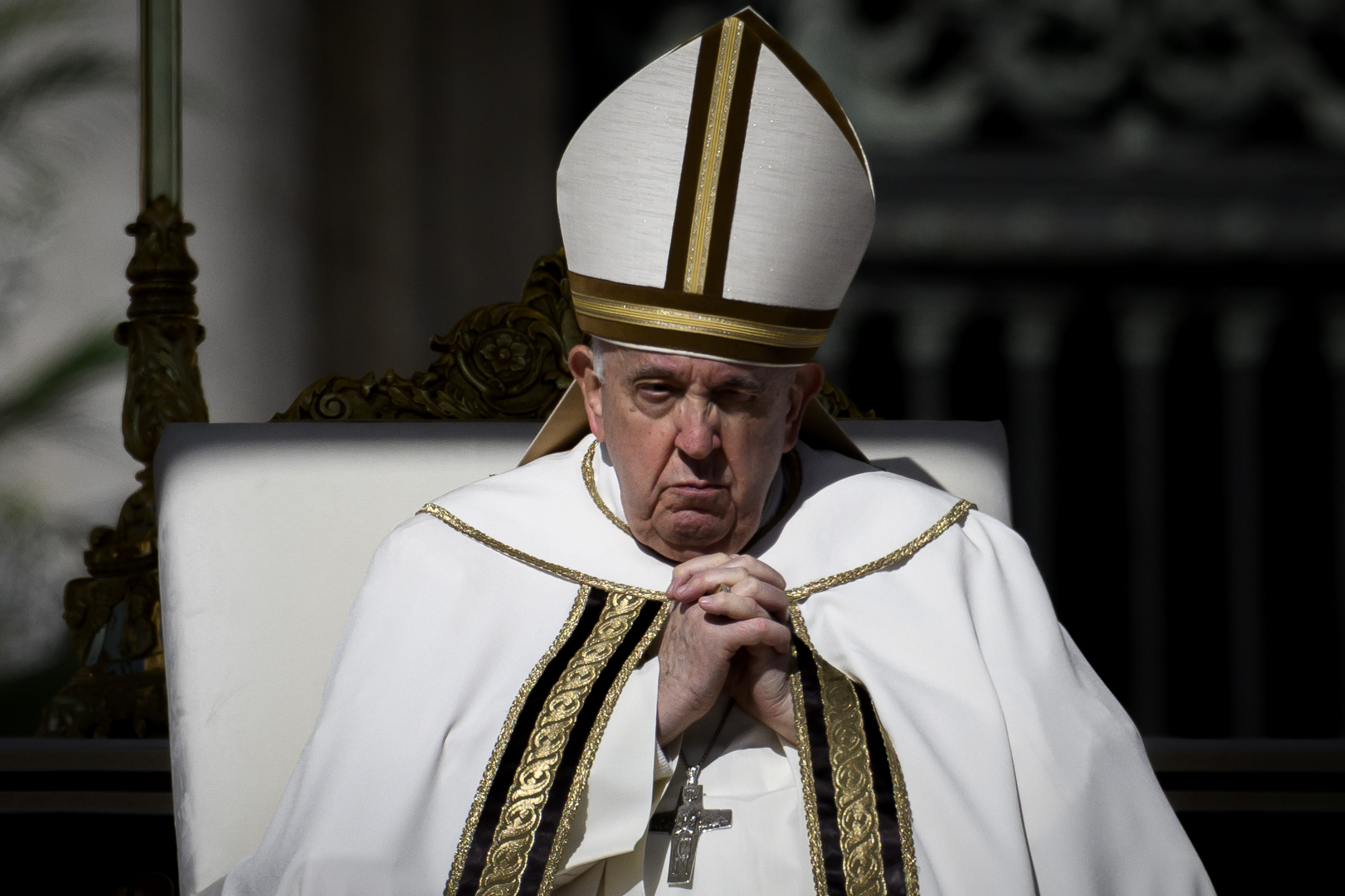
Pope Francis presiding over the Easter Mass at St. Peter's Square, on April 9, 2023, in Vatican City. | Source: Getty Images
Despite his declining health, the pontiff continued working from the hospital, reportedly making governmental decisions and approving new appointments.
He also met with his second-in-command, Cardinal Pietro Parolin, and the Vatican's chief of staff to discuss the canonization of five new saints.
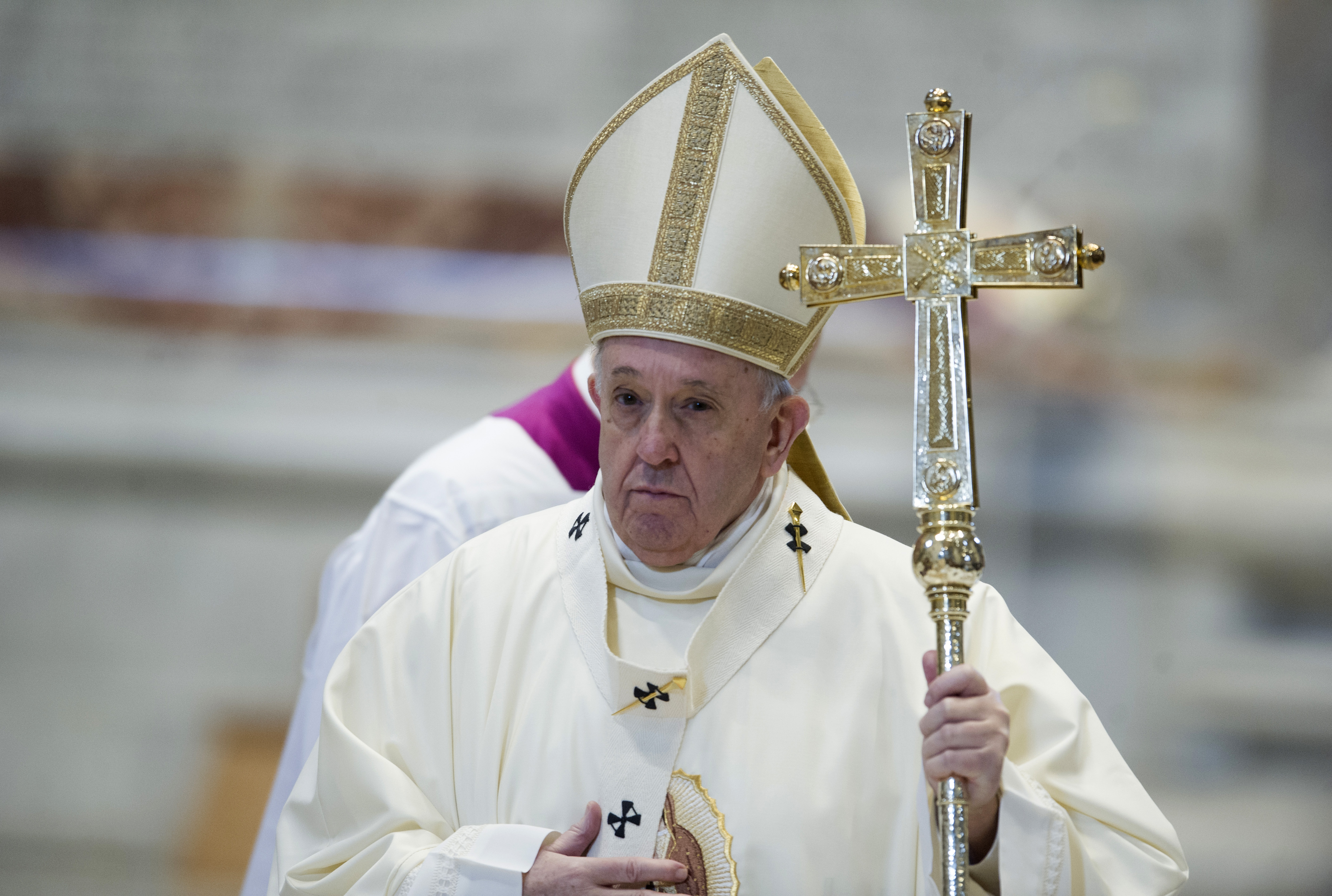
Pope Francis during a celebration of Mass for the feast of Our Lady of Guadalupe at the Altar of the Chair in St. Peter's Basilica on December 12, 2020, in Vatican City. | Source: Getty Images
Additionally, Pope Francis called for a consistory — a formal gathering of all cardinals — to determine when these saints would be officially recognized.
However, some within the Church, including priests in Rome, speculated that the consistory could serve a dual purpose, possibly signaling more significant developments within the Vatican.
Speculation surrounding Pope Francis' resignation persisted in part due to his own remarks in the past. The Pope had previously stated that he would consider stepping down if his health severely limited his ability to fulfill his duties, following the precedent set by Pope Benedict XVI.
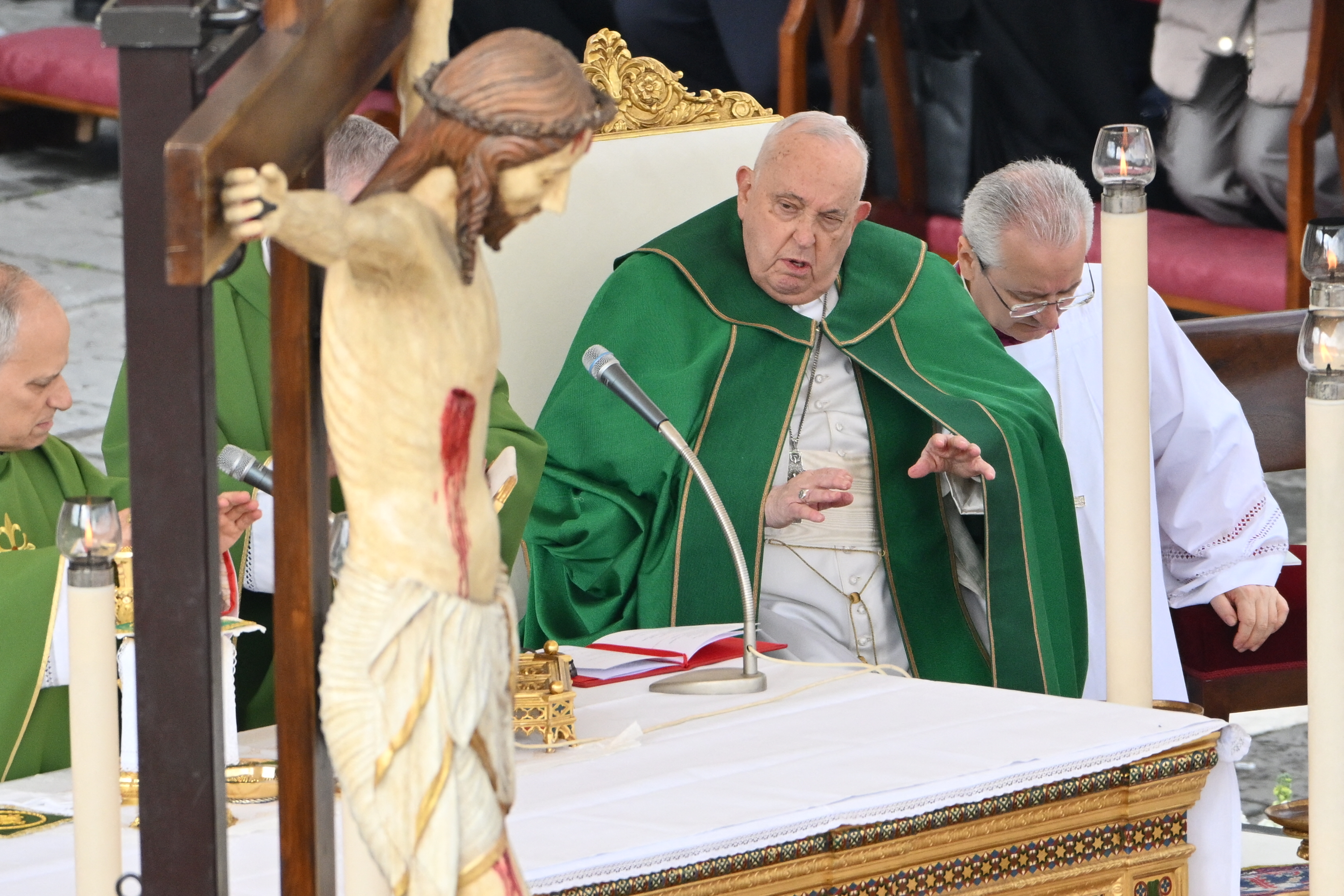
Pope Francis celebrating the mass for the Jubilee of the Armed Forces at St. Peter's square in Vatican City on February 9, 2025. | Source: Getty Images
In the 2022 interview, he confirmed that he had already prepared for such a possibility. "I have already signed my resignation," he stated, revealing that he had handed the document to then-Secretary of State Tarcisio Bertone.
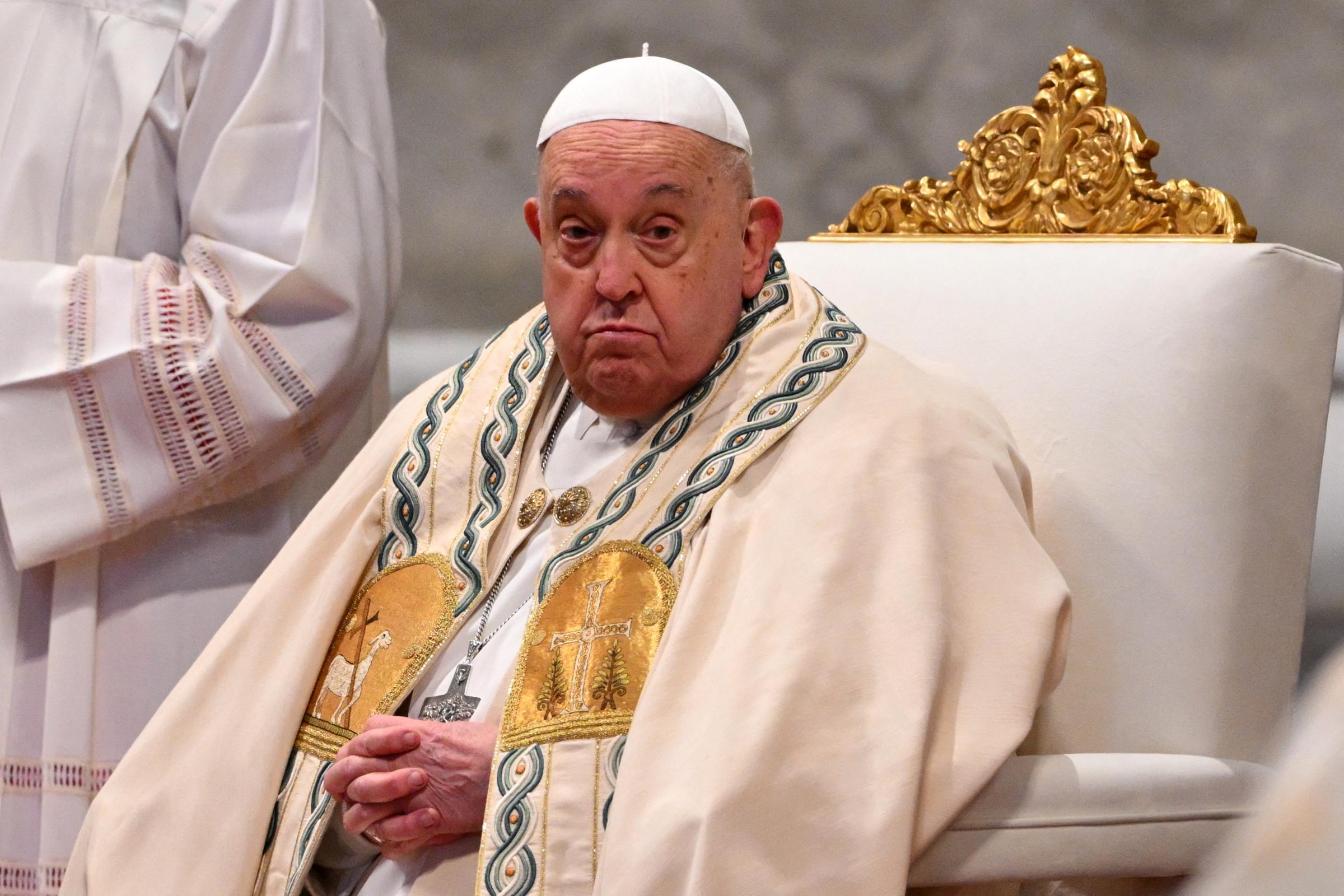
Pope Francis celebrating New Year's Day during a mass on World Day of Peace in St. Peter's Basilica on January 1, 2025, in Vatican City. | Source: Getty Images
"I signed it and I told him, 'In case of impediment for medical reasons or what do I know, here is my resignation. You have it,'" he added.
When asked about the whereabouts of the letter, the Pope speculated that Bertone likely passed it to his successor, Cardinal Parolin.
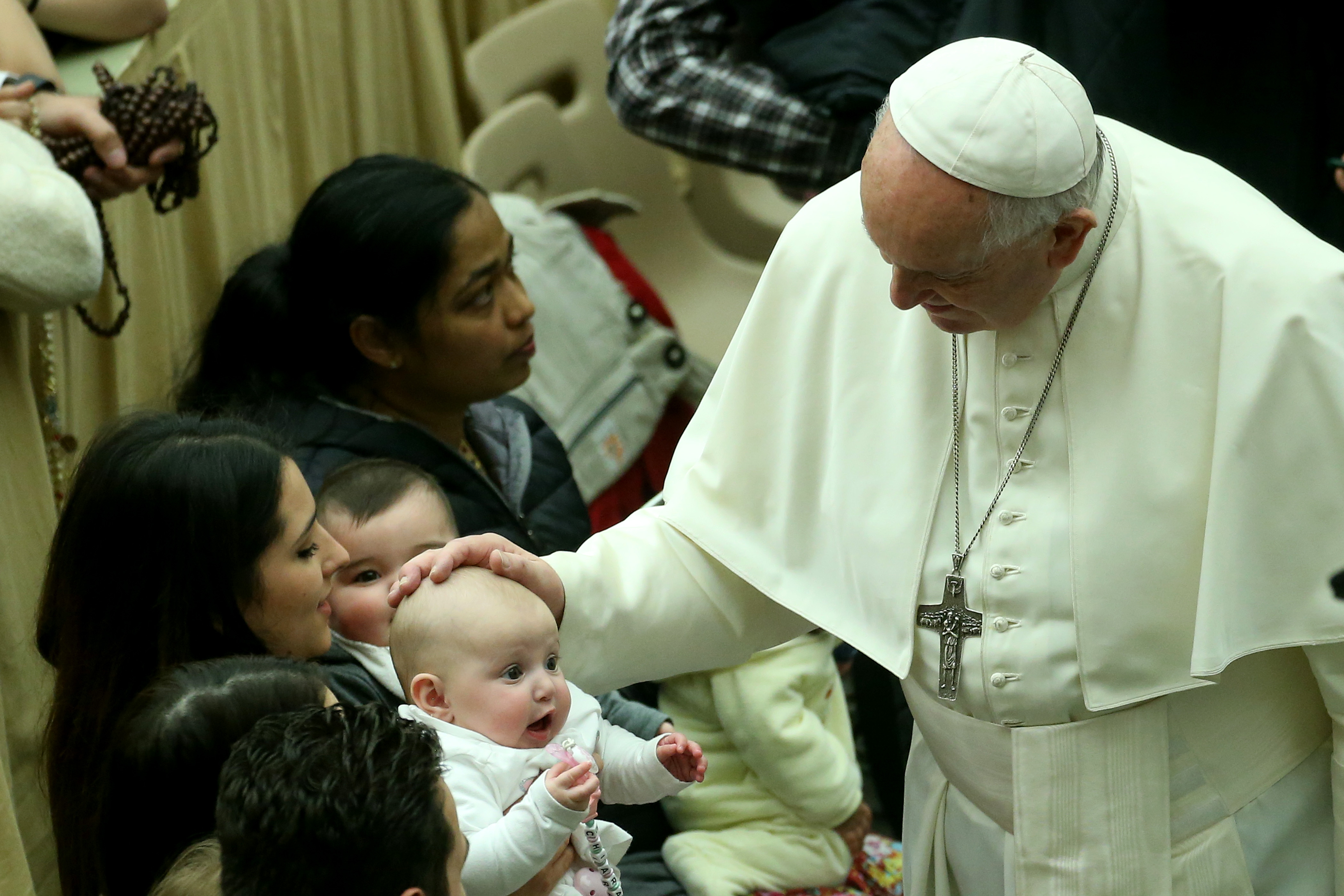
Pope Francis blessing a baby during his weekly audience at the Paul VI Hall on February 12, 2020, in Vatican City. | Source: Getty Images
He is not the first pope to take this precautionary step. "Paul VI also left in writing his resignation in case of permanent impediment," Pope Francis was told during the same interview.
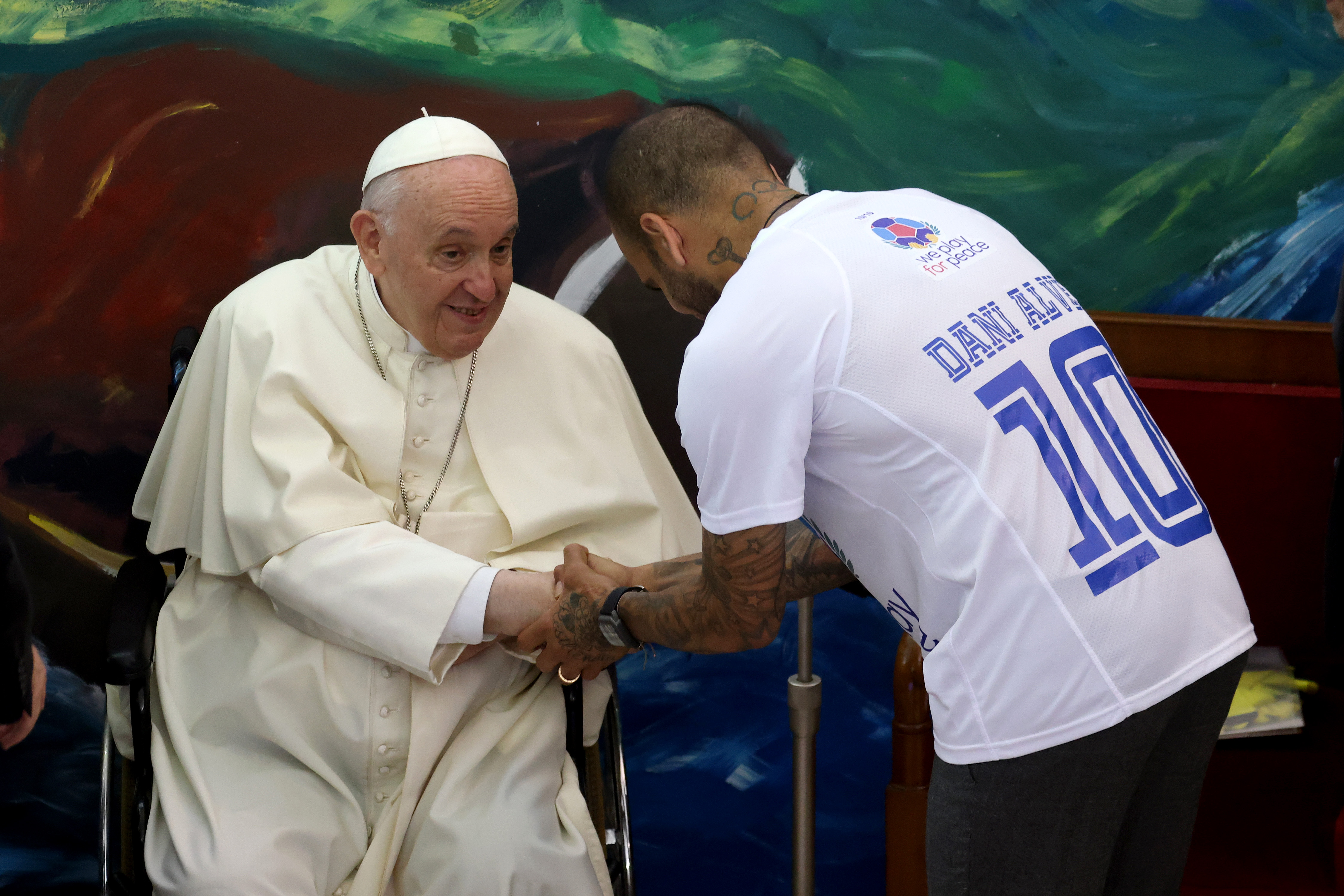
Pope Francis greeting soccer player Dani Alves during the launch of the Scholas Occurrentes International Movement at the Pontifical Urban University on May 19, 2022, in Vatican City. | Source: Getty Images
"That's right, and Pius XII, I think he did too," he responded. However, unlike Pope Benedict XVI, who became the first pope in nearly 600 years to resign voluntarily, Pope Francis never openly expressed an imminent intention to step down.
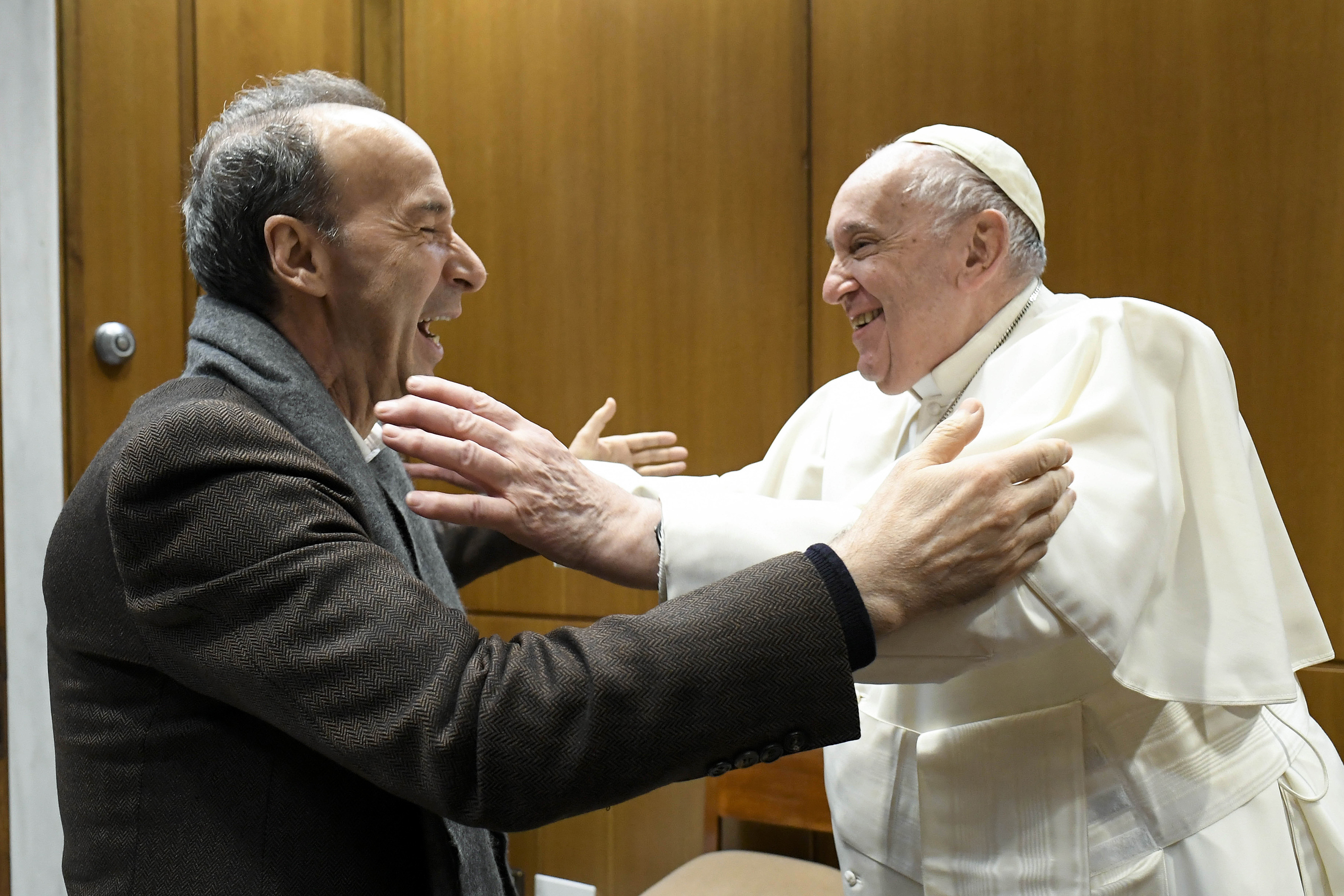
Pope Francis meeting Italian actor and director Roberto Benigni at Paul VI Hall on December 7, 2022, in Vatican City. | Source: Getty Images
In his final weeks, the Pope was reportedly preoccupied with ensuring his legacy and finalizing key decisions. Sources close to the Vatican suggested that he was deeply concerned about his declining health and was rushing to complete unfinished matters, particularly regarding Church leadership and reforms.
According to two individuals familiar with the situation, the Pope had been in severe pain and had privately expressed certainty that he would not recover.
In response, he moved to secure the future direction of the Church by appointing key figures to influential positions, continuing his progressive agenda amid ongoing ideological divisions within the Vatican.
